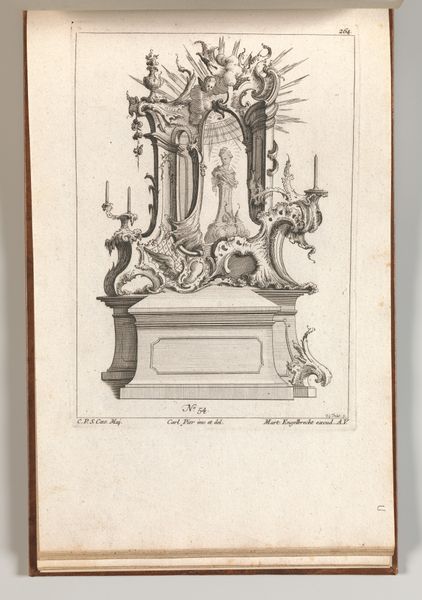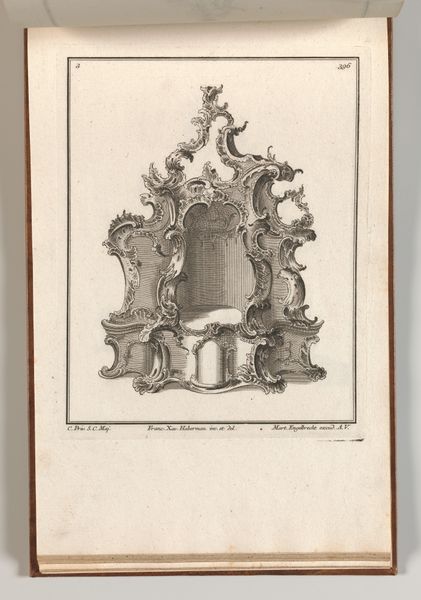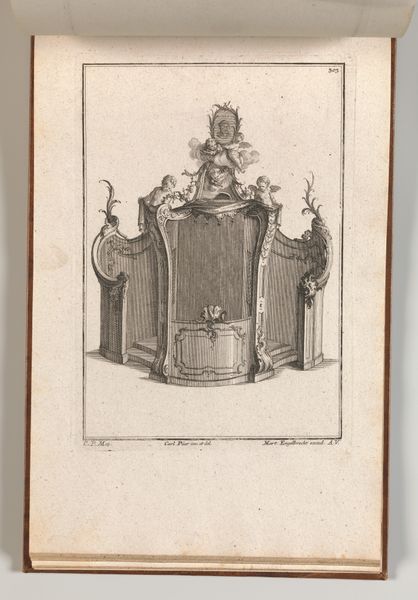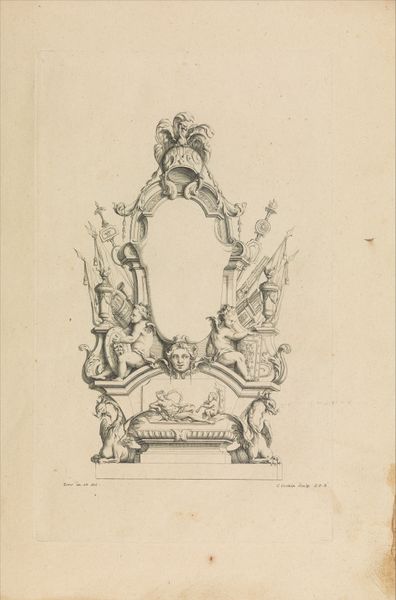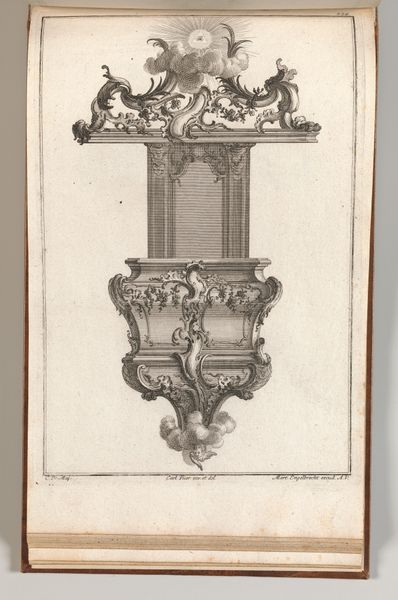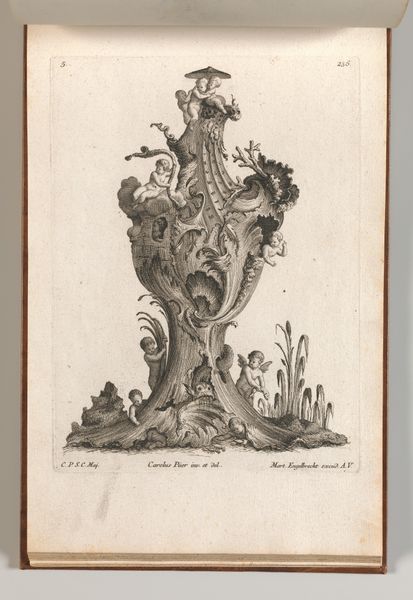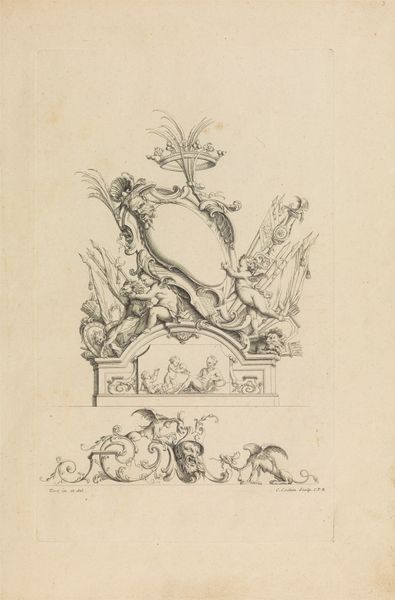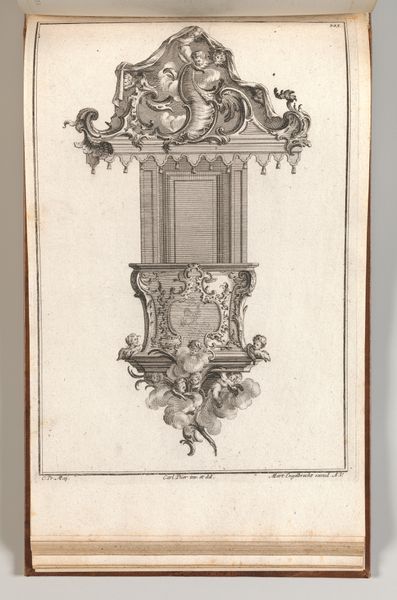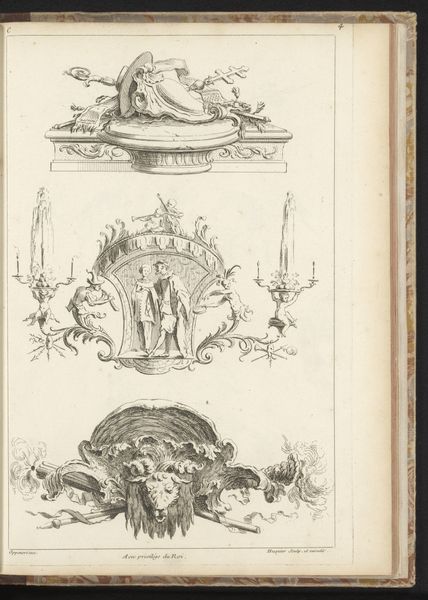
Design for an Altar, Plate 2 from an Untitled Series of Designs for Altars 1745 - 1755
0:00
0:00
drawing, print, engraving
#
drawing
#
baroque
# print
#
engraving
Dimensions: Overall: 8 7/16 × 13 3/4 in. (21.5 × 35 cm)
Copyright: Public Domain
Editor: This is "Design for an Altar, Plate 2 from an Untitled Series of Designs for Altars," created between 1745 and 1755 by Jacob Gottlieb Thelot. It’s an engraving, and the Baroque style is really evident. The altar seems incredibly ornate, almost excessively so. What does its visual language tell us? Curator: This engraving provides insight into the social function of religious art during the mid-18th century. Think about the purpose of an altar. It's not just a surface; it's a stage. The Baroque style, with its emphasis on grandeur and emotional impact, serves to elevate the ritual and reinforce the power of the church. Editor: So, it’s designed to overwhelm the senses, to make you feel...small? Curator: Precisely. It’s part of a larger strategy of persuasion through spectacle. How does the rendering and printmaking medium play into this, versus an altar built in real life? Editor: I guess the engraving allows for the wide distribution of these designs, almost like a catalog of sacred set pieces. Did this kind of intense Baroque style play a role in later movements? Curator: Absolutely. Consider how Neoclassicism, with its restrained forms, reacted against the perceived excesses of the Baroque. The image is not just an artistic expression; it's a statement about cultural and religious power, sparking architectural evolution across the eras. Editor: It’s fascinating to think of this image as being part of a conversation about how we, as a society, engage with institutions. Thank you for that! Curator: My pleasure! It’s these kinds of dialogues that help us reconsider how we view and understand historical artifacts.
Comments
No comments
Be the first to comment and join the conversation on the ultimate creative platform.

